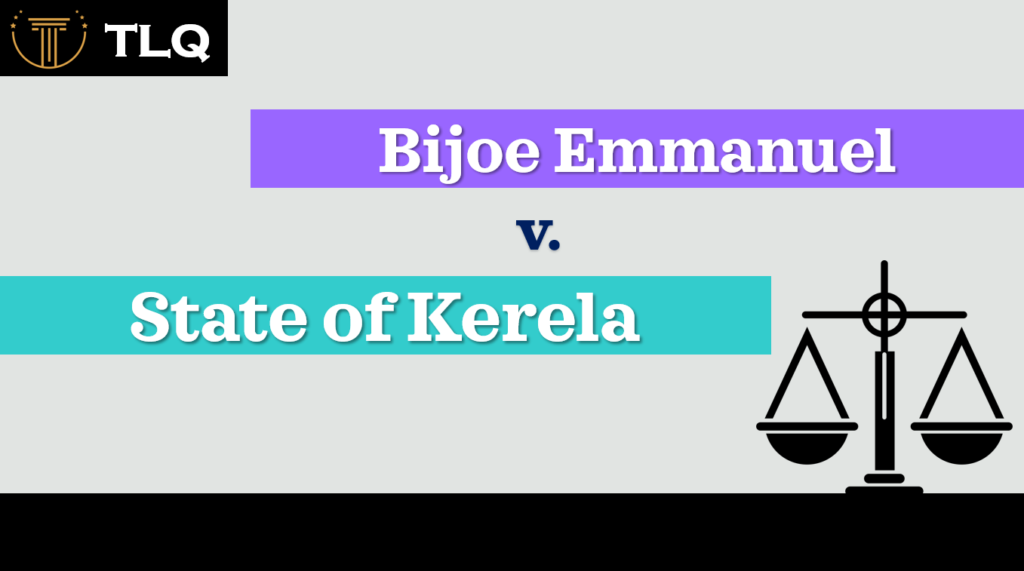Published on: 03rd November 2025
Authored by: Sanskriti Upadhyay
Shambhunath Institute of Law
Introduction
The death penalty remains one of the most contentious issues in contemporary Indian jurisprudence, embodying a complex intersection of legal doctrine, moral philosophy, and social policy. Despite decades of judicial evolution and legislative amendments, India continues to grapple with fundamental questions about the appropriateness of capital punishment in a democratic society committed to human dignity and constitutional values. This discourse has gained renewed urgency in recent years, particularly following high-profile cases that have reignited public debate about the efficacy, morality, and necessity of the ultimate sanction.
The Indian legal system’s approach to capital punishment reflects a delicate balance between retributive justice and reformative ideals, shaped by constitutional principles, international human rights norms, and evolving societal consciousness. From the landmark Bachan Singh case1, that established the “rarest of rare” doctrine to recent judicial pronouncements questioning the continued relevance of death penalty, Indian courts have continuously refined their approach to capital punishment, creating a rich jurisprudential tapestry that merits comprehensive examination.
Historical Context and Legal Framework
Constitutional Foundations
The Indian Constitution does not explicitly prohibit capital punishment, though Article 21’s guarantee of the right to life has been subject to extensive judicial interpretation. The constitutional validity of death penalty was first comprehensively examined in Jagmohan Singh v State of UP2, where the Supreme Court upheld its constitutionality, ruling that deprivation of life through due process of law did not violate Article 21. This decision established the constitutional foundation for capital punishment in India, subject to procedural safeguards and substantive limitations.
The constitutional framework governing death penalty derives its legitimacy from the principle that the right to life, while fundamental, is not absolute and may be curtailed through due process of law. However, subsequent judicial developments have increasingly emphasized the need for stringent procedural and substantive safeguards, reflecting an evolving understanding of constitutional values and human dignity.
1 Bachan Singh v State of Punjab (1980) 2 SCC 684
2Jagmohan Singh v State of UP AIR 1973 SC 947
Legislative Evolution
The Indian Penal Code, 1860, originally prescribed death penalty for a wide range of offences, reflecting the retributive justice philosophy of colonial criminal law. However, post independence reforms have significantly narrowed the scope of capital punishment. The Criminal Procedure Code, 1973, mandated that life imprisonment should be the rule and death penalty the exception, requiring special reasons for imposing capital punishment3.
Subsequent amendments have further refined the legal framework. The inclusion of Section 354(3) in the CrPC, requiring courts to state special reasons for imposing death penalty, marked a significant shift towards restricting capital punishment. 4Additionally, various legislative enactments have introduced death penalty for specific heinous crimes, including terrorism related offences under the Unlawful Activities (Prevention) Act and rape resulting in death under the Criminal Law (Amendment) Act, 2013.
The “Rarest of Rare” Doctrine
Landmark Judgment: Bachan Singh v State of Punjab
The watershed moment in Indian death penalty jurisprudence came with the Supreme Court’s decision in Bachan Singh v State of Punjab (1980)5, which established the “rarest of rare” doctrine. The Court held that death penalty should be imposed only in the “rarest of rare cases when the alternative option is unquestionably foreclosed.” This formulation attempted to provide objective criteria for capital punishment while maintaining judicial discretion in exceptional circumstances.
The Bachan Singh judgment identified several aggravating and mitigating circumstances to guide judicial decision-making. Aggravating factors included the manner of commission of murder, motive, anti-social or socially abhorrent nature of the crime, and magnitude of the crime. Mitigating circumstances encompassed the accused’s age, probability of reformation, and socio economic background. This framework aimed to ensure that death penalty was reserved for cases where life imprisonment was demonstrably inadequate.
Judicial Application and Refinements
The practical application of the “rarest of rare” doctrine has proven challenging, with courts struggling to maintain consistency in its application. In Macchi Singh v State of Punjab6, the Supreme Court attempted to provide greater clarity by identifying five categories of “rarest of rare” cases, including murders committed in an extremely brutal manner and those posing continuing threat to society.
3 Code of Criminal Procedure 1973, s 354(3)
4 Code of Criminal Procedure 1973, s 354(3)
5 Bachan Singh v State of Punjab (1980) 2 SCC 684
6 Macchi Singh v State of Punjab (1983) 3 SCC 470
However, subsequent cases have revealed the inherent subjectivity in applying these criteria. The Supreme Court in Swamy Shraddananda v State of Karnataka7, introduced the alternative punishment of life imprisonment without remission, acknowledging the need for intermediate sentencing options between death and regular life imprisonment. This innovation reflected growing judicial unease with the binary choice between death and life imprisonment.
Contemporary Legal Challenges
Procedural Safeguards and Due Process
Recent judicial pronouncements have emphasised the critical importance of robust procedural safeguards in death penalty cases. The Supreme Court in Shatrughan Chauhan v Union of India8, established comprehensive guidelines for commutation of death sentences, including specific timelines for disposal of mercy petitions and provisions for commutation based on prolonged delay in execution.
The Court has also recognised the right of death row prisoners to adequate legal representation and the importance of considering mental health in capital cases. In Smt Triveniben v State of Gujarat, the Court held that prolonged delay in execution could be grounds for commutation, acknowledging the psychological torture inherent in extended periods on death row9.
International Human Rights Perspectives
India’s death penalty jurisprudence has increasingly incorporated international human rights norms, though not without controversy. The International Covenant on Civil and Political Rights, to which India is a party, permits death penalty only for “most serious crimes” and prohibits its application to juvenile offenders and pregnant women. The Supreme Court has generally aligned Indian law with these international standards, though debates continue about the broader international trend towards abolition.
The European Union and various international human rights organisations have consistently advocated for universal abolition of death penalty, creating diplomatic pressure on retentionist countries including India. However, Indian authorities have maintained that capital punishment remains necessary for certain heinous crimes, particularly in the context of terrorism and crimes against women and children.
Moral and Ethical Dimensions
Retribution versus Rehabilitation
7 Swamy Shraddananda v State of Karnataka (2008) 13 SCC 767
8 Shatrughan Chauhan v Union of India (2014) 3 SCC 1
9 Smt Triveniben v State of Gujarat (1989) 1 SCC 678
The moral foundation of death penalty rests primarily on retributivist theories of justice, which argue that certain crimes deserve the ultimate punishment as a matter of moral desert. Proponents contend that death penalty serves societal demand for proportionate punishment and provides closure to victims’ families. This perspective views capital punishment as an expression of society’s moral condemnation of the most heinous crimes.
Conversely, rehabilitative theories of justice emphasise the possibility of human redemption and the state’s obligation to preserve life wherever possible. Critics argue that death penalty represents an irreversible denial of the possibility of reformation and rehabilitation, contradicting fundamental principles of human dignity and the potential for moral transformation.
Philosophical Perspectives on State-Sanctioned Killing
The ethical debate surrounding death penalty extends beyond purely legal considerations to fundamental questions about the state’s moral authority to take life. Philosophers and ethicists have long debated whether the state possesses legitimate authority to impose death as punishment, regardless of the heinousness of the crime committed.
Some argue that state-sanctioned execution represents the ultimate expression of society’s moral condemnation and serves essential expressive and communicative functions. Others contend that institutionalised killing, regardless of its legal justification, diminishes society’s respect for human life and perpetuates cycles of violence.
Contemporary Reform Movements
Judicial Activism and Evolving Jurisprudence
Recent Supreme Court decisions have demonstrated increasing scepticism towards death penalty, with several judges expressing personal reservations about capital punishment. In Santosh Kumar Satishbhushan Bariyar v State of Maharashtra, Justice Kurian Joseph’s separate opinion called for reconsideration of the death penalty, arguing that the “rarest of rare” doctrine had become subjective and arbitrary in application.10
The Court has also recognised the systemic biases affecting death penalty cases, including the disproportionate impact on economically disadvantaged defendants and the influence of media coverage on judicial decision-making. These concerns have led to calls for comprehensive reform of capital punishment jurisprudence and consideration of alternative sentencing mechanisms.
Legislative Reform Initiatives
Various parliamentary committees and law commissions have examined the death penalty question, with mixed recommendations. The 262nd Report of the Law Commission of India
10 Santosh Kumar Satishbhushan Bariyar v State of Maharashtra (2009) 6 SCC 498
(2015) recommended abolition of death penalty except for terrorism-related offences11, citing concerns about irreversibility, arbitrariness, and lack of deterrent effect. However, these recommendations have not been implemented, reflecting continued political and popular support for capital punishment in certain categories of cases.
Recent legislative developments have actually expanded the scope of death penalty in specific contexts, particularly for crimes against women and children. The Criminal Law (Amendment) Act, 2018, introduced death penalty for rape of children below twelve years, demonstrating continued legislative confidence in capital punishment as an appropriate response to particularly heinous crimes.
Comparative Perspectives and International Trends Global Abolitionist Movement
The international trend towards abolition of death penalty has been marked and consistent, with over two-thirds of countries worldwide having abolished capital punishment in law or practice. The European Union’s complete abolition of death penalty and the increasing number of abolitionist countries in other regions have created a global normative shift against capital punishment.
Countries that have recently abolished death penalty, including several in Asia and Africa, have cited concerns about irreversibility, discriminatory application, and lack of deterrent effect. These developments have created additional pressure on retentionist countries, including India, to reconsider their position on capital punishment.
Regional Variations and Cultural Contexts
However, regional variations in death penalty practice reflect different cultural, religious, and political contexts. Several Asian countries, including China, Saudi Arabia, and Iran, continue to impose death penalty regularly, arguing that capital punishment serves important social and deterrent functions in their respective contexts.
India’s position reflects this regional variation, with capital punishment retained for specific categories of crimes while judicial and legislative safeguards have been progressively strengthened. This approach attempts to balance international human rights norms with domestic security concerns and popular sentiment regarding heinous crimes.
Impact on Vulnerable Populations
Socio-Economic Disparities
11 Law Commission of India, Report No 262, ‘The Death Penalty’ (Government of India 2015)
Empirical studies of death penalty application in India have revealed significant socio-economic disparities, with economically disadvantaged defendants disproportionately represented on death row. These disparities reflect broader systemic inequalities in the criminal justice system, including inadequate legal representation, prosecutorial discretion, and judicial bias.
The Supreme Court has increasingly recognised these concerns, with several judgments acknowledging the role of socio-economic factors in death penalty cases. In Mithu v State of Punjab, the Court struck down the mandatory death penalty provision, partly based on concerns about its discriminatory impact on marginalised populations.12
Mental Health Considerations
Recent jurisprudential developments have also emphasised the importance of mental health considerations in capital cases. The Supreme Court has recognised that mental illness and intellectual disability should be significant mitigating factors in death penalty cases, reflecting evolving understanding of criminal responsibility and moral culpability.
Future Directions and Reform Proposals
Towards a More Refining Approach
Contemporary reform proposals focus on refining rather than abolishing death penalty, acknowledging both moral concerns and practical realities. These include proposals for mandatory appellate review, enhanced procedural safeguards, and alternative sentencing options such as life imprisonment without parole.
The development of restorative justice mechanisms and victim-centred approaches to serious crimes has also gained attention as potential alternatives to purely retributive responses. These approaches emphasise healing, accountability, and community involvement rather than punishment alone.
Technological and Forensic Developments
Advances in forensic science and DNA technology have both supported and challenged death penalty practice. While improved forensic techniques have enhanced conviction reliability, they have also revealed numerous cases of wrongful conviction, highlighting the irreversible nature of capital punishment and the fallibility of criminal justice systems.
Conclusion
The death penalty debate in India represents a complex intersection of legal doctrine, moral philosophy, and social policy that defies simple resolution. While the “rarest of rare” doctrine has provided a framework for limiting capital punishment, its application remains contentious and
12 Mithu v State of Punjab (1983) 2 SCC 277
inconsistent. Contemporary challenges include ensuring procedural fairness, addressing systemic biases, and reconciling domestic criminal justice needs with international human rights norms.
The path forward likely requires continued judicial refinement of death penalty jurisprudence, enhanced procedural safeguards, and serious consideration of alternative sentencing mechanisms. Whether India will ultimately join the global abolitionist trend or maintain a reformed but retentionist position remains an open question, dependent on evolving public opinion, judicial philosophy, and political will.
The ongoing debate reflects deeper questions about the nature of justice, the role of the state, and the value of human life that extend far beyond criminal law. As India continues to develop as a democratic society committed to human rights and constitutional values, the death penalty question will undoubtedly remain a central challenge requiring careful balance between competing moral, legal, and practical considerations.




